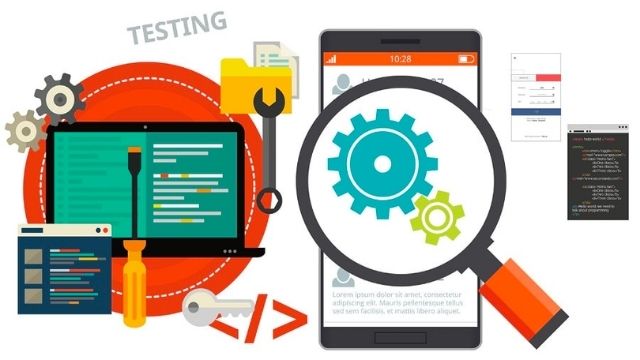Mobile application testing presents unique challenges and still gives no middle ground. Either you win or you lose, and there’s no return. There are various choices that you will make and certain tradeoffs that you will consider for methods and techniques used in mobile app testing. And remember that every testing technique will have pros and cons and not a single method will guarantee satisfying results. Rather, testing strategies combined with various testing options will balance off quality, cost, and time.
Mobile devices with apps have become an integral standard for communication, business reputation, and source of information. An app with failed user experience can bring down even the biggest names and therefore it is essential to test every aspect of the app before putting it out in the market. We will consider various elements of mobile app testing in this article.
The recommendations we present in this article are based on personal experience, research, and extensive developing experience of the JatApp dedicated development team. Let’s take you through the process of app testing strategies for successful development:
Mobile Device Selection
The first step for this process will be the most difficult one as this decision directly corresponds to the market reach of the app. You will have two choices to make within device selection: making a choice between emulators and substantial devices. Following factors will need consideration before making a choice of device:
- Your app should be tested on a stable version of the OS
- For testing the app for size and resolution, ensure using various screens.
- Test your app for form factors-if it’s compatible with tablets and smartphones.
Other factors as connectivity options, memory size, etc. will also require consideration.
Emulators vs. Physical Devices
For the early stages of development, emulators should be used as they aid inefficient testing. However, you can make a choice among emulators and physical devices. Device emulators are cost-effective and useful in the feature development process for functionality testing. Device emulators also act as an excellent choice for test scripting languages, pseudo live environment, and live bypass.
Usage of mobile devices doesn’t limit the usage of the physical devices since testing practically allows an understanding of app activities virtually. It is imperative to use both physical mobile devices and emulator mobile devices for efficient and best results. Physical device testing is a step towards beta testing which is a very helpful technique in mobile app testing for admittance to actual networks, wider geographic coverage, real devices, and real-world testers.
Beta testing facilitates you for testing the app for the following factors:
- Density of network
- The behavior of app on various devices
- How the app and the real world users interact
- Various states of the batter on different devices
- Testing of the app on other networks (4G, Wi-Fi, 3G, etc.)
Testing On Mobile App on Cloud
Cloud-based mobile app testing provides a web-based environment for testing, making scenario combinations easy. Web-based cloud computing enables deploying, testing, and managing the application and also helps decrease the project cost while increasing ROI.
You will achieve the following from cloud-based app testing:
- Pre-configured and synchronized architectures
- Decreased in defects that are linked to test configurations that are unstable
- Free businesses from setting up on-premise testing conditions which take a longer time.
- Eliminates the usage of server settings, advanced tools, and licensing
- Provide solutions for complex apps
- Provide results in real-time
- Reduces TTM
Network Connectivity
Network connectivity cannot be ignored as the majority of the apps depend on network connectivity for working accurately. Thus, it is important to test mobile apps in a real network environment to experience the actual app behavior picture. A great number of network simulation tools are available for testing apps against connection dropouts, bandwidth limits, network speeds, and other scenarios. Your app has to perform consistently across all network environments to win.
Manual vs. Automated
Automated testing is a key factor in bringing successful regression testing steps to the development stages. Automation does however need a strong investment initially, therefore it should be done in scenarios when:
- The app has grown to a certain extent
- The development cycle of mobile is long
- Regression testing frequency and scale is high
Mobile Application Performance testing
Testing app performance and scalability is always a good practice. Check and test if the performance of your app gets affected by the increasing size of albums, messages, mailboxes, and other content linked to the application. The app should also be tested against user-generated data or content linked to music, photos, etc. If the app has server-side components then the app should also be tested against an increased number of users.
Mobile App Security Testing
Users are always concerned about their credentials and data being exposed where data and security are not options. Answer the following questions and confirm successful mobile app testing:
- Do your app store payment and credit card details?
- Does your app use secure network protocols?
- Can the secure protocols be switched with the insecure ones?
- Does your app ask for permission before taking any step?
- Does the app use certificates?
- Does the app use Device ID?
- How many login attempts are required before locking out?
Knowing the trends in today’s mobile app testing strategies can help developers identify certain methods that will make their projects saleable to the public. Use these strategies as guidelines for your next app!




































